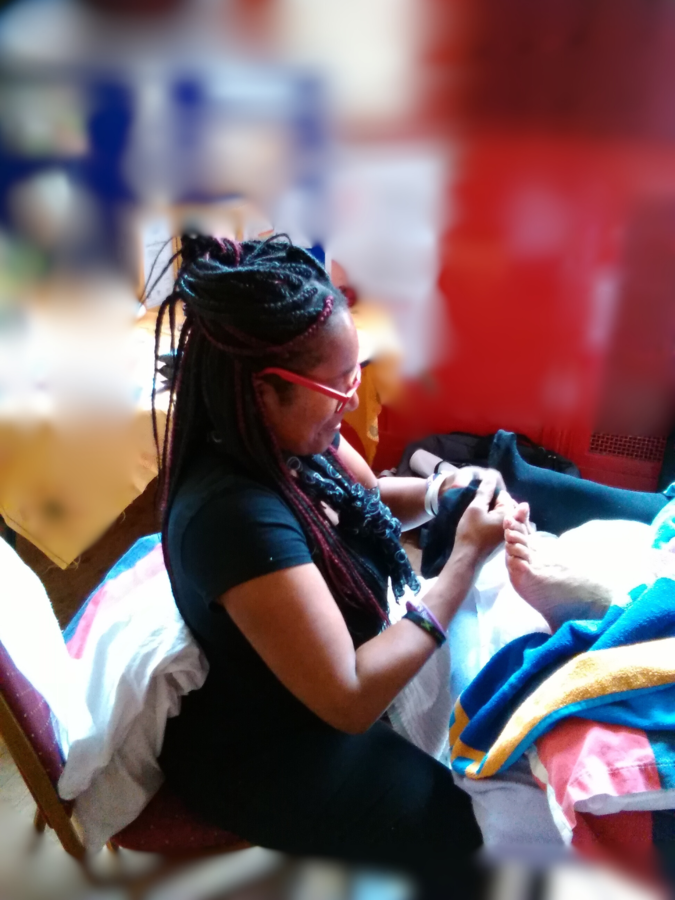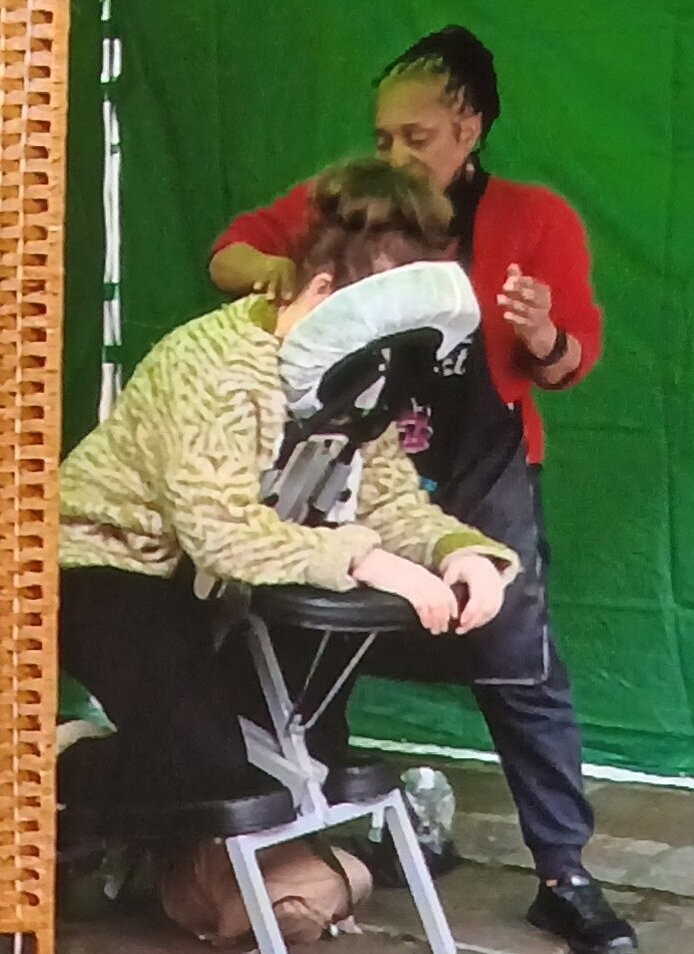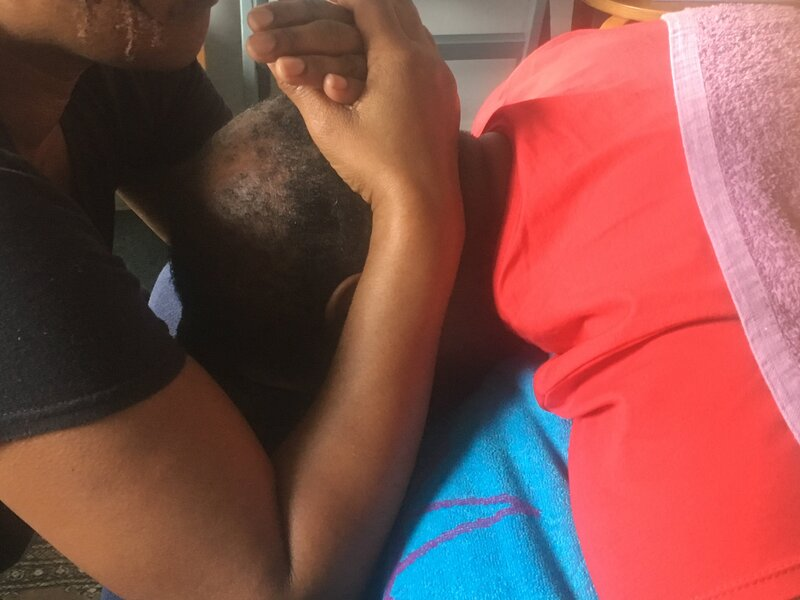Reflexology
Bermondsey, London SE1
Reflexology is non-invasive, relaxing, therapeutic and sets off all the body’s healing mechanisms. It reduces stress by creating deep relaxation, a sense of balance and well-being by helping the nervous system to calm down and function normally. When you apply reflexology to the foot you stimulate more than 7,000 nerves which can encourage the opening and clearing of neural pathways and helping the body to return to its natural rhythm.

Reflexology is a holistic treatment based on the principle that reflex points on the soles, tops and sides of the feet are connected to corresponding areas throughout the body. In this way the feet can be seen as a ‘map’ of the body. When pressure is applied to these areas and points it, stimulates the movement of energy along the nerve channels, and helps to restore homeostasis (balance) in the whole body. Reflexology is a very individual treatment tailored to you as a whole person, considering both physical and non-physical factors that might be affecting your wellbeing. Reflexology soothes the mind and re-balances the body naturally.
What to expect with Reflexology
After discussing your medical history, I will answer any questions you may have. In my treatment room you can relax on a comfortable reclining chair, La Fuma with a soft blanket available to keep you warm. I start playing relaxation music, use a diffuser with different essential oils and the reflexology session will then start. You will get a further 5 to 10 minutes at the end of the session to gently return to normal.
Benefits of Reflexology
Feelings of deep relaxation
Increased energy levels
Release of endorphins, the body’s feel-good hormones (which can also provide pain relief)
Reduced stress
Improved circulation
More improved removal of impurities and toxins
Stronger immune
A sense that the whole body is better balanced or in harmony

Full Body Massage
Bermondsey, London SE1
If you’re looking for the perfect way to treat yourself, de-stress and relax, then a full body massage is a great option. You can 100% switch off, unwind and be at peace for a while.
What to expect from a full-body massage
A full body massage has the power to provide ultimate relaxation for you. During this type of therapy, you can expect to be massaged across many problem areas in the body such as the neck, back, shoulders, legs and feet, where tension can often reside. During your massage treatment, you’ll be asked to lie in different positions so that I can complete the massage using oils to carefully ease knots and tension out of your body.
Benefits of Fully Body Massage
This relaxing style of massage uses long and flowing strokes that increase the body's natural circulation and blood flow, which has many medical and well-being benefits such as: reducing stress hormones, lowering blood pressure, strengthening the immune system, encouraging beneficial sleep, energy boosting to injury recovery and hormone regulation.
Muscle tension can be uncomfortable to deal with and is often caused by stress or exercise causing the body to feel stiff and more difficult to move. A massage can help relieve the tension in the muscles, allowing you to move more freely with reduced aches and pain. A relaxing massage may also help to correct bad posture and minimise muscle spasms.
Stress is something that affects all of us and a massage can help us to deal with it more easily. Cortisol is one of the main stress hormones, which increases the level of sugar in the bloodstream. A full body massage helps to increase the more positive hormones around the body, such as endorphins, which replace these stress hormones.
Massage therapy is extremely effective at moving blood around the body. The techniques and pressure used can help to heal muscles throughout the body. As the pressure is alleviated, new blood can flow through. This increased blood flow can help to support your blood pressure. Speak to a doctor if you’re experiencing symptoms of high blood pressure.
The skin begins to glow more as tension is released from the body in multiple places. This occurs due to the massaging techniques allowing blood to flow through the body more easily.
Due to the changes in pressure during a massage, the body allows more oxygen to flow to organs and tissue around the body. Massage therapy can help to aid recovery after a sports injury.
Generally, the body feels less tense, and injuries may be on the road to recovery. This means that the body can move more freely.
In the same way that massages help to decrease the amount of cortisol in the body, a full body massage increases feel-good hormones, such as serotonin. This can help to reduce feelings of anxiety and depression. Serotonin is responsible for many things, such as mood, sleep, digestion and more. Regular massage can be a great form of physical contact for you and can boost your mental health.
Indian Head Massage
Bermondsey, London SE1
Indian head massage is an ancient therapeutic practice used in Asia for over 5,000 years. It focusses on massaging the points of head, face, neck and shoulders, frequently using circular massage movements to improve the condition of hair and scalp and relax the muscles.

The goal is to bring your body's energy back to normal. Stress, tension, anxiety, melancholy, exhaustion, sleeplessness, headaches, migraines and sinusitis are all supposed to be helped/eased with Indian head massage. The short and long-term benefits of Indian Head Massage are individual and varied. This is a holistic therapy which treats the whole person not just the illnesses. Improved blood flow to the head and neck increases distribution of oxygen and nutrients throughout the body to encourage healing.
What happens during a treatment
You will be seated in a comfortable upright chair for the treatment. The use of oils is optional for this treatment, but these are beneficial for the scalp, hair and skin, and helpful in alleviating muscular pain and stiffness. Indian Head massage creates a balanced feeling of peace and calm; often leaving you more alert and revitalised after a 30-minute session.
Indian head massage, also known as champissage, is a treatment that focuses on massaging acupressure points along the head, neck and shoulders, often using circular massage strokes and a range of different pressures. A typical Indian head massage treatment, usually starts with the upper back and shoulders, working into this area especially as it often holds a lot of tension. Flowing motions will move up the neck massaging and stretching to relieve any stress and tension.
Finally, the scalp is then massaged along the acupressure points on the head, followed by the forehead, temple area and eyes.
Benefits of Indian Head Massage
Reduced stress
Improved hair condition
Improved muscle tension in face, neck, shoulder, back and upper arms
Helps mobility in neck and shoulders
Encourages a feeling of wellbeing
Promotes deep relaxation
Improved circulation to the head and neck assisting in the removal of toxins
Improves Lymphatic Drainage encouraging the removal of waste products
Improves energy levels
Scientific Evidence
The Study: Killer Cells and Lymphocytes Increase in Women with Breast Cancer Following Massage Therapy’ M Hernandez-Reif, T. Field et al International Journal of Neuroscience 115 (4): 495-510, April 2005.
Women with breast cancer were given regular massage therapy and the results clearly showed that they produced higher dopamine levels. Dopamine is associated with good mood. Just like countless other studies researchers also showed increased levels of natural killer cells and higher lymphocyte count, the two measures of a healthy immune system. Even more importantly, the women reported feelings less depressed and angry and having more energy.
The Study: ‘Massage Therapy Effects on Depressed Women’ T Field et al Journal of Psychosomatic Obstetrics and Gynaecology, June 2004 Vol 25, No.2pp.
A thoroughly scientific double-blind study tested the effects of two 20-minute clothed Chair Massages per week for pregnant women who were experiencing depression. This went on for 16 weeks – and the massage was provided by their partners. 84 depressed pregnant women participated with two control groups who did other activities instead of receiving massage.
The women in the massage group had significantly raised levels of serotonin and dopamine and significantly decreased levels of cortisol and norepinephrine which are associated with stress. Women in the control group showed no change. The women in the massage group also reported significant decrease in depression, anxiety and physical aches and pains. They also showed a decrease in foetal activity and had new premature births.
The Study: ‘The effectiveness of Massage Therapy Interventions on Reducing Anxiety in the Workplace’ KA Shulman & Jones, Journal of Applied Behavioural Science 1996 Vol 32, Ptll pp 160-175.
There are many studies that show how massage reduces stress. This study shows how just 15-minutes of clothed massage was given to 35 members of a large manufacturing organisation every week for six weeks. The scientific measurements show that massage reduced stress and anxiety. Both the control group and massage group showed high levels of stress but only the massage group displayed well below average levels of stress.
The Study: ‘Patricia A Sharpe, PhD, LMT Prevention Research Ctr, Norman J Arnold School of Public Health University of South Carolina, Columbia, SC 292208 pasharpe@sc.edu
Another study tested the effects of massage therapy on 50 older adults. Sessions were twice weekly for four consecutive weeks. The massage group improved significantly more than the control group on anxiety, depression, vitality, general health, positive wellbeing and a whole variety of physical indicators. Massage therapy had positive effects on psychosocial and functional health of older adults.
The Study: University of Illinois at Urbana-Champaign Department of Educational Psychology. Published in Psychological Bulletin 2004 Vol 130, No.1, pp 3-18.
This research involves a study of 37 studies on massage. Each study used had to compare a massage-therapy group with one or more non-massage control groups. The 37 studies selected used a total of 1,802 participants. Of these 795 received massage therapy and 1,007 received a comparison treatment.
All 37 studies showed significant reductions in anxiety, blood pressure, heart rate, depression and pain levels in the massage group.